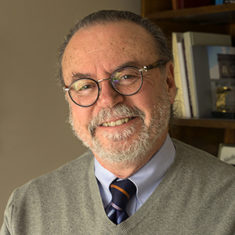It Is Useful To Think Of Arrangement Not Just Of One Communication Step, But Of A Series Of Interactions.
By Thomas J. Roach
When we consider arrangement in communication, we mostly think about how to order our arguments in a speech or an essay. However, most issues are deliberated over a period of days or weeks, and it is useful to think of arrangement not just of one communication step, but of a series of interactions like an email chain, or in a series of meetings, or both.
Speech teachers still promote Monroe’s Motivated Sequence. In the 1930s, Purdue University professor Alan H. Monroe developed the most popular technique for arrangement:
- Get the attention of your audience.
- Establish that there is a need for your proposal.
- Offer ways of meeting the need.
- Help the audience visualize the solution.
- Tell the audience how they can apply the solution.
Consensual Decision-Making
In the post-Depression, post-World War II years, we began to move away from authoritarian administrative structures where leaders made decisions and give orders for others to obediently carry out. Decision-making has become more and more consensual. Particularly in exempt jobs, enlightened leaders learned to set goals and let their employees work out how to accomplish them.
Today, a group challenged with a new task might at first hold a meeting to flesh out the assignment. This might be followed with an exchange of emails asking and answering questions raised at the first meeting. At the next meeting, plans might be outlined and discussed. This could be followed by more emails challenging and supporting the plans. At a third meeting the group could decide on a course of action and start working.
In many situations this process might develop spontaneously, but sometimes one or more of the group members feels strongly about a particular solution or a way of looking at the issue. If they blurt out their perspective and their plan at the start of the first meeting, the group will may feel like they are being denied the opportunity to weigh the issues for themselves, and the premature plan will become a stalking horse for other proposals.
Gain Support
A better way to gain support is assess the group’s needs for each particular meeting and limit your comments to only those needs, holding back the rest of your ideas and justifications for the right moment. If a project has just been laid on the table, ask questions with everyone else. When a second meeting is held to consider options, then present your plan in outline form without all the details.
If the plan is accepted, then the group’s interest will shift to operational details. Even at this point, it might be strategic to still hold back and let the group make suggestions. You may find they have insights that you overlooked, and if not, at least they participated in drawing up the plan and will be more motivated to carry it out. When they are done, you can add what you think they missed.
A Contemporary Assumption
This model is based on the more contemporary assumption that important decisions are best made slowly with the participation of all involved parties. There is nothing wrong with participating in discussions freely without a personal agenda, but it is also reasonable to expect that often you and others will have developed more advanced conclusions, and it is perfectly ok for you to express them as effectively as possible, but this is done best by spreading out your ideas as the process develops so you don’t appear to be hijacking the meeting.
If your argument matches the needs and developmental stages of the group, then it is more likely to be considered. Additionally, if it is laid out incrementally as recommended, then you may learn that there were flaws in the plan and you will be able to make adjustments as the group moves closer to reaching a consensus.
The concept of time-sequenced arrangement is presented here for use in internal communication. In a later column, it will be applied to communication with external publics.

Thomas J. Roach Ph.D., has 30 years experience in communication as a journalist, media coordinator, communication director and consultant. He has taught at Purdue University Northwest since 1987, and is the author of “An Interviewing Rhetoric.” He can be reached at [email protected].
